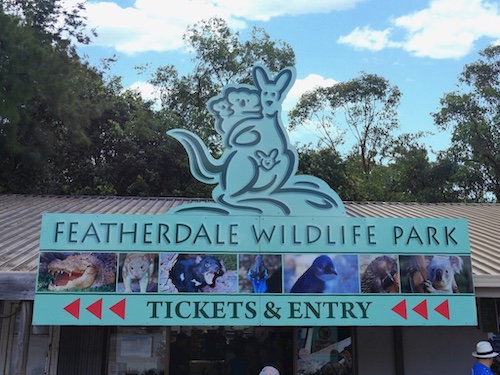
I just arbitrarily decided to split the post on Featherdale Wildlife Park into two sections, one on native birds and the other on everything else. The split is not as arbitrary as it seems, there are many more species of birds than mammals, marsupials, etc due to the isolated geographic location of Australia and New Zealand. Australia has a far more diverse range than New Zealand (in fact around half of New Zealand’s birds originate directly from Australia). Established on 7 acres of land originally purchased by Charles and Marjorie Wigg in 1953, Featherdale has evolved from a poultry farm into one of the best privately owned wildlife parks in Australia. The Wigg’s son-in-law, Bruce Kubbere studied Australian fauna from early childhood and with his vision and encouragement, Featherdale opened to the public as a wildlife park in 1972. In this section I thought I would point out the differences between Padmelons, Wallabies and Kangaroos. Kangaroos are much bigger than Wallabies. Kangaroos can grow up to 8 feet tall, that’s a little over 2 metres, whereas wallabies are about 80 cm tall, that’s about 2 foot 8″. The wallaby’s feet are a bit longer and his legs are very close together. What’s a pademelon? This is easy, it’s a smaller wallaby, these ones are about 50cm tall, about 1 foot 8″.
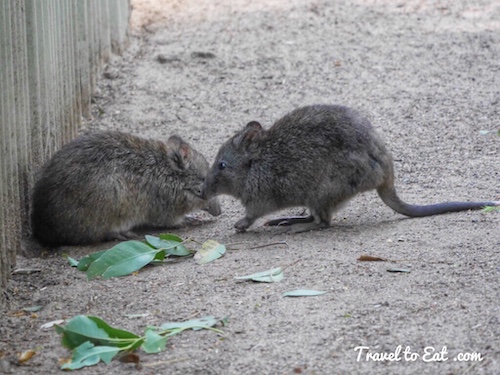
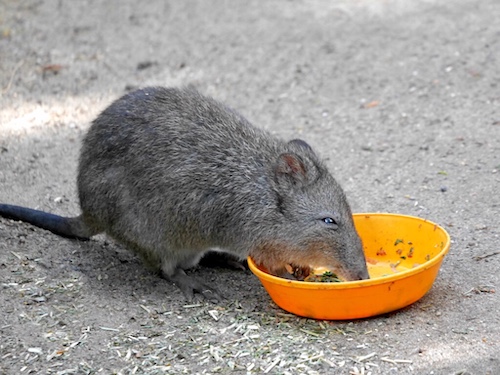
The Rufous Rat-Kangaroo (Aepyprymnus rufescens), also known as the rufous bettong, is a small marsupial species of the family Potoroidae found in Australia. The rufous rat-kangaroo is the only member of its genus, and is the largest of all the potoroids. It is generally grey with a hint of reddish brown and its scientific name means reddish high-rump. They have pointed ears, a hairy muzzle, pale red fur round the eyes. These bettongs are nocturnal and spend most of the night browsing on grasses and other plant food. The Rufous Bettong, like all rat-kangaroo species is a very specialised plant-eater. The rat-kangaroos dig up and eat underground storage-organs of plants: tubers, bulbs, corms, and swollen roots, and especially truffles, which are the spore-bearing bodies of underground fungi.
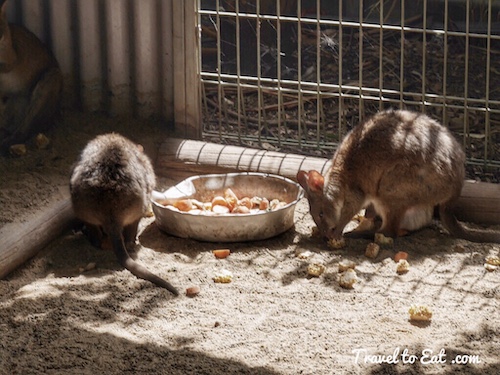
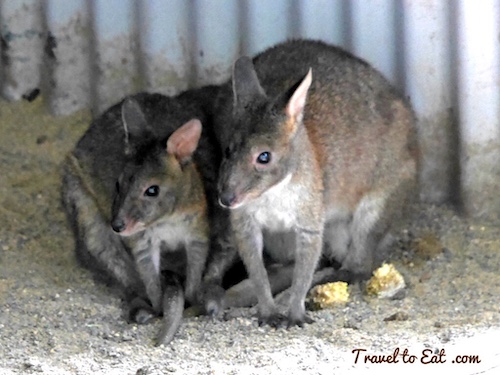
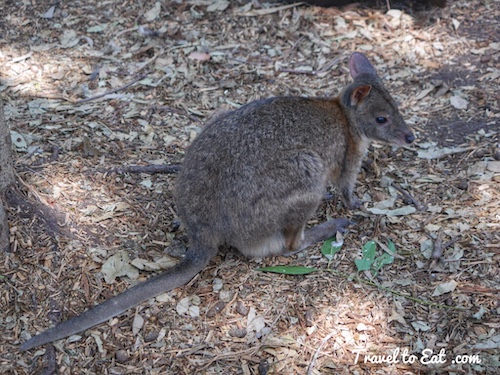
The Red-necked Pademelon (Thylogale thetis) is brown-grey with a cream underbelly and a red-tinted neck and shoulders. The Pademelons are small, compact, short-tailed wallabies that typically inhabit wet sclerophyll and rainforests from Tasmania to New Guinea. The genus is equally diverse in New Guinea (4 species) and Australia (3 species) with one of the latter, the Red-legged Pademelon (T. stigmatica), in both regions. The Pademelons occupy an interesting taxonomic position and may have been the ancestors of both Tree-kangaroos and Rock-wallabies a few million years ago. Given the absence of Rock-wallabies from New Guinea but presence of Pademelons in both Australia and New Guinea, Tree-kangaroos likely evolved first, probably in New Guinea, and two species entered the far north through Cape York. Rock-wallabies evolved later in Australia, probably on the east coast where Pademelons are found, and when no suitable habitat breached the Torres Strait or Bass Strait given their absence from Tasmania. kangaroos are much bigger than wallabies.
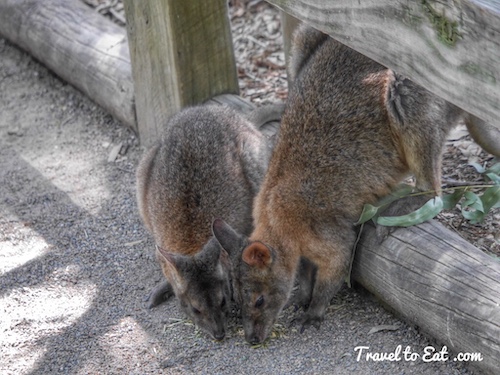
The Parma Wallaby (Macropus parma) is the smallest member of the genus Macropus, which contains a number of kangaroo, wallaby and wallaroo species. The Parma Wallaby has short, brown fur on the back, turning greyish on the head, while the upper chest, lower jaw and underparts are covered in white to light grey fur. The long, strong tail, which is typically the same length as the rest of the body, is sparsely covered in fur. Like the pademelons, it prefers to occupy wet forest with thick undergrowth, and grassy patches, although Parma wallabies are also found occasionally in dry eucalyptus forest and even rainforest. It is mainly nocturnal and usually shelters in thick scrub during the day, through which it can travel at speed along the runways it makes. It emerges from cover shortly before dusk to feed on grasses and herbs in forest clearings.
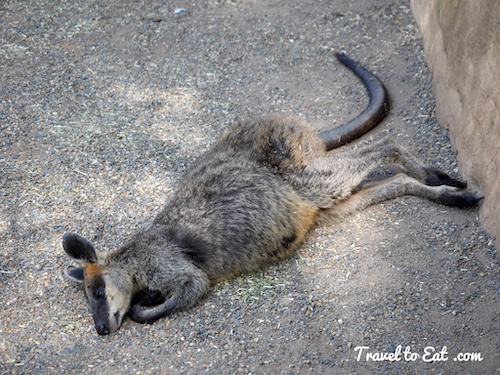
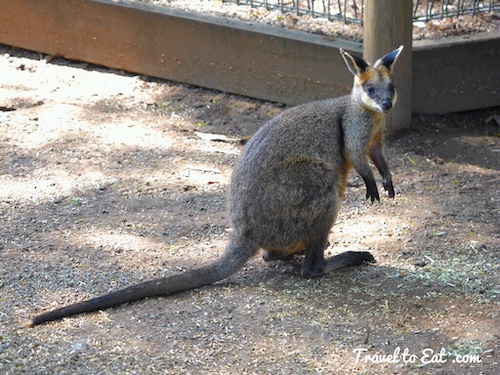
Brush-tailed Rock-wallabies (Petrogale penicillata) are a beautiful rock-wallaby species, distinguishable for their bushy tail. Adults have a body length of 108-115cm and weigh 6-8kgs. The body fur is medium-dark brown with grey shoulders and darker feet. Each cheek has a white stripe of fur, and a black stripe running from in-between the eyes to the back of the head. They graze on native grasses found in surrounding habitat at dawn and dusk. They also feed on the foliage and fruits of shrubs and trees as well as roots and bark. Life is tough for brush-tailed rock wallabies. They have been deprived of available habitat due to a combination of factors including clearing of native vegetation, exotic plant invasion and changed patterns of fire across the landscape. Impacts, such as these, on their habitat have caused the brushtailed rock-wallaby to disappear from much of the southern and western part of its range.
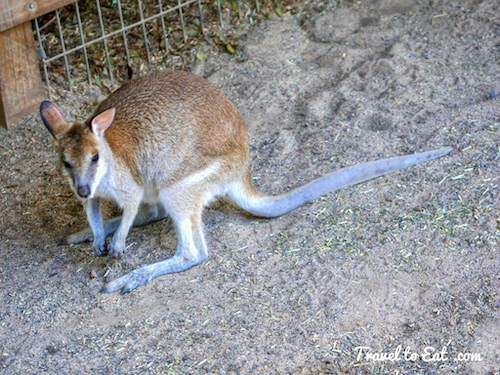
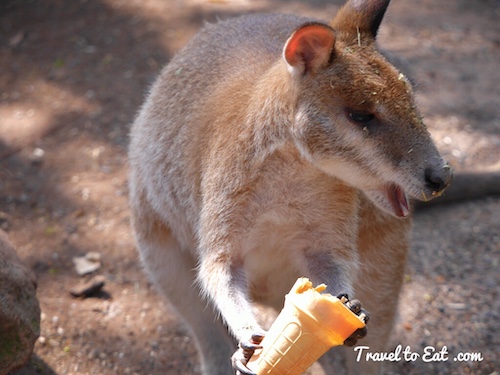
The largest of the Rock-wallabies, Yellow-footed Rock-wallabies (Petrogale xanthopus) stand at 90-100cm tall, with males weighing an average of 8kgs and females 6kgs. They are one of the most brilliantly-coloured rock-wallabies, with brown and yellow rings on their tail, yellow paws, grey fur covering their body, and a white belly with white stripes on their cheeks, hips and abdomen. There are estimated to be less than 10,000 mature individuals in the wild. A large section of the species range in South Australia has been surveyed (most years from 1993-2008), indicating that there are on the order of 6,000 individuals currently in South Australia. This species inhabits rocky outcrops and is often associated with permanent or semi-permanent water sources. It is a highly social species that lives in small colonies usually of less than 20, but sometimes containing more than a hundred.
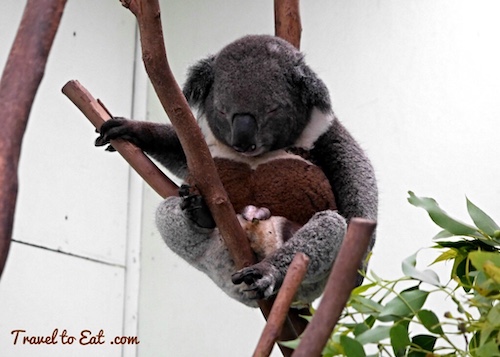
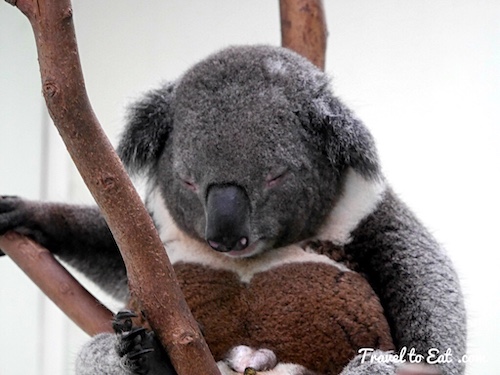
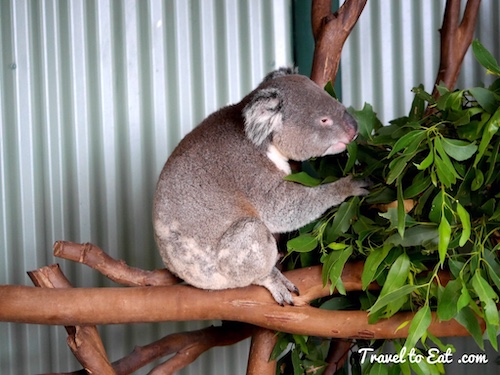
One of the most iconic animals known to Australia, Koalas (Phascolarctos cinereus) are often mistakenly called the “Koala Bear”. Koalas are not a bear, but are in fact a marsupial. They have 5 digits on each hand- 3 work like fingers, and 2 work like thumbs. Koalas also have no claw on their thumb toe, and two toes joined together with separate claws. Koalas have small eyes and a large black nose, and sleep for 18-20 hours a day, primarily waking in the night-time to eat, fight and mate. Males can weigh up to 14kgs, and females up to 10kgs. Koalas have a lifespan of 12-15 years in captivity, and 8-10 years in the wild. The Koala’s closest relative is the common wombat. Koalas typically inhabitopen eucalyptus woodlands, and the leaves of these trees make up most of their diet. Because this eucalyptus diet has limited nutritional and caloric content, koalas are largely sedentary and sleep for up to 20 hours a day. Their colour ranges from silver grey to chocolate brown. Koalas from the northern populations are typically smaller and lighter in colour than their counterparts further south. It is possible that these populations are separate subspecies, but this is disputed.
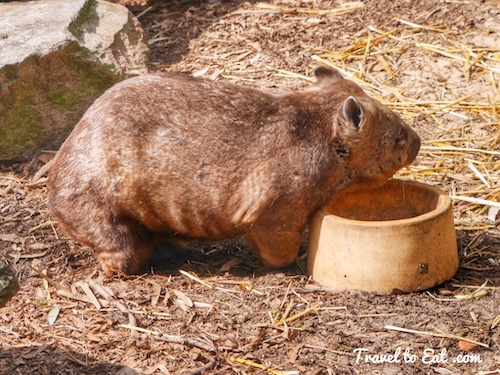
Wombats are one of the oddest-looking animals you’ll ever see! Native to Australia, the comical animals look like short, stocky bears. But wombats are really marsupials, related to koalas and kangaroos. They are either sandy brown or grayish black to blend in with the landscape and avoid predators. The sturdy wombat is most active in the early evening and at night. There are three species of wombat: common, or bare-nosed, wombats, which have a bare nose, and two species of hairy-nosed wombats that have, well, hairy noses! The common wombat has coarse fur and short, round ears while the hairy-nosed wombats have soft fur and much larger ears. Although wombats look cute and cuddly, they tend to have a short temper and can become very aggressive if they feel threatened.
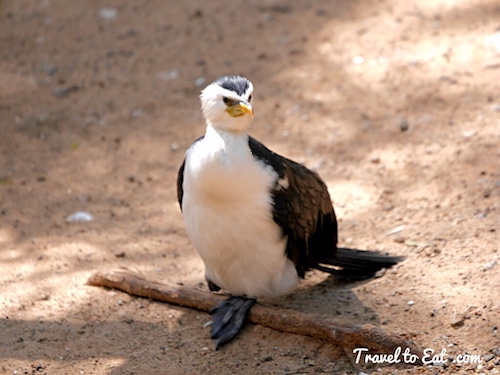
The Little Pied Cormorant, little shag or kawaupaka (Microcarbo melanoleucos) is a common Australasian waterbird, found around the coasts, islands, estuaries, and inland waters of Australia, New Guinea, New Zealand, Malaysia, and Indonesia, and around the islands of the south-western Pacific and the subantarctic. It is a small short-billed cormorant usually black above and white below with a yellow bill and small crest. The little pied cormorant finds its prey on the sea floor. It is a solitary feeder, normally diving in relatively shallow water, often near the shore. Dive times are short, around 15 to 20 seconds, with recovery times on the surface of 5 to 10 seconds unless prey are being swallowed. It takes a variety of fish prey but an unusually high proportion (nearly 30% by weight on average, and up to 80% in some individuals) of crustaceans. It may be just me but this bird seems almost a perfect match to the Penguins of Madagascar, even though it is not a penguin.
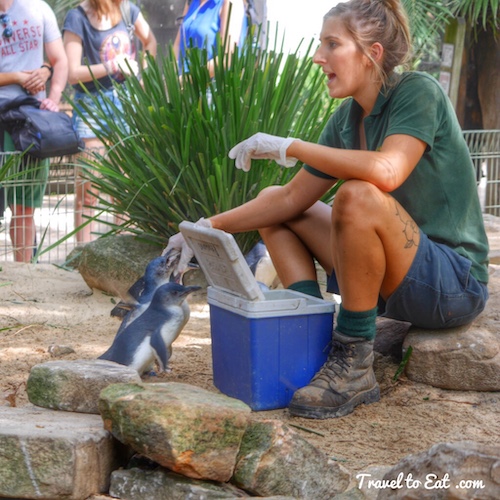
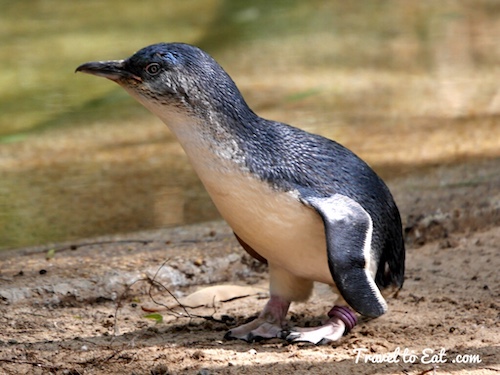
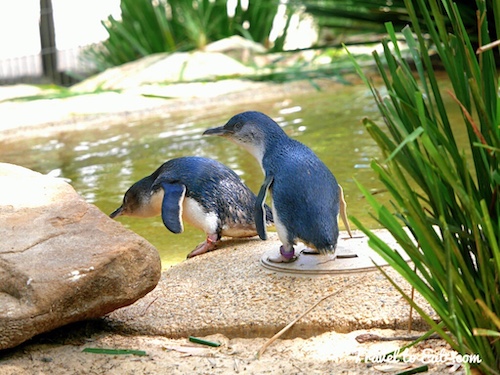
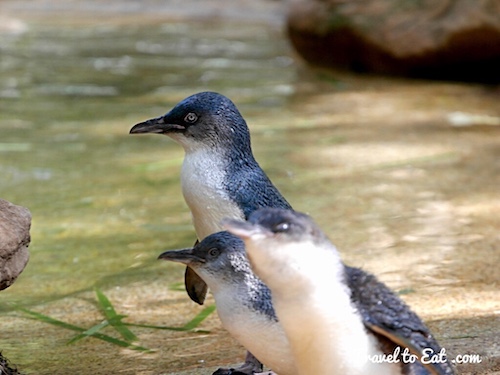
The smallest of all penguin species, the Little Blue Penguin is an adorable bird, standing at 40-45cm tall and weighing up to 1kg. Their head, neck, back, rump and tail feathers are a glossy dark-blue, and the chin, throat, chest and abdomen are white. The flippers are dark-blue on top and white underneath with a grey ‘smudging’ at the tips, and the beak is leaden-black. On land, Little Penguins inhabit rocky coastal areas and islands with vegetated sand dunes and crevices in cliff-bases. In water, Little Penguins inhabit warm seas ranging from 13-20°C. Little Penguins live in colonies that can have hundreds of members ashore at one time. From June-August, males will come ashore and renovate old burrows or dig new ones. They will perform loud courting displays for arriving females, who will join them in a courtship display in which both birds will stand erect with their flippers spread out and heads bowed, walking in tight circles around the nesting site. Little penguins are only found in southern Australia and New Zealand. In Australia little penguin colonies are scattered around the coastline from near Perth on the west coast, to Sydney on the east coast, and around Tasmania. Phillip Island has only one remaining little penguin colony, part of which can be seen at the Penguin Parade which offers up-close views of little penguins.
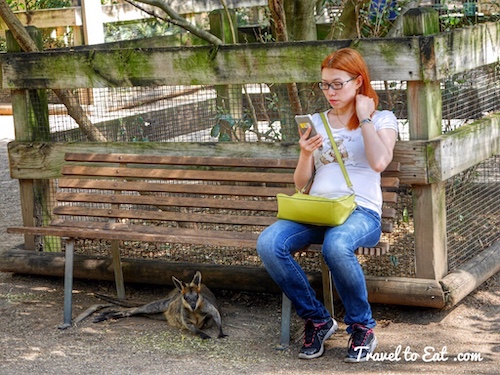
As always, I have done my best to catagorize the animals, not such an easy task when most are just wandering around. If you do visit, don’t be like this oblivious visitor, the wonders of nature all around you (and even right under you). Ditch the electronic leash and have some fun, life is too short without fun. Visit Featherdale and have some real life enjoyment.
[mappress mapid=”75″]
References:
Wallabies and Kangaroos: http://www.bobinoz.com/blog/7091/whats-the-difference-between-wallabies-and-kangaroos/
Rufus Rat Kanaroo: http://www.fauna.com.au/web_pages/animals/marsupials/rufous_bettong.html
Red-Necked Padmelons: http://www.rootourism.com/fsheet66.htm
Parma Wallaby: http://www.hhpz.org/files/hhpz/documents/AnimalFactSheets/Parma%20Wallaby.pdf/
Wallabies: http://www.featherdale.com.au/wallaby/
Koala: https://www.savethekoala.com/
Wombat: http://animals.nationalgeographic.com/animals/mammals/wombat/
Little Pied Cormorant: http://australianmuseum.net.au/Little-Pied-Cormorant
Penguins: http://info-in-gen.blogspot.com/2014/07/information-about-penguins.html
Little Penguins: http://penguinfoundation.org.au/about-little-penguins/

